Jul 15, 2025
How to Create a Personal Yearbook: Crafting Your Future-Focused Repossible Yearbook
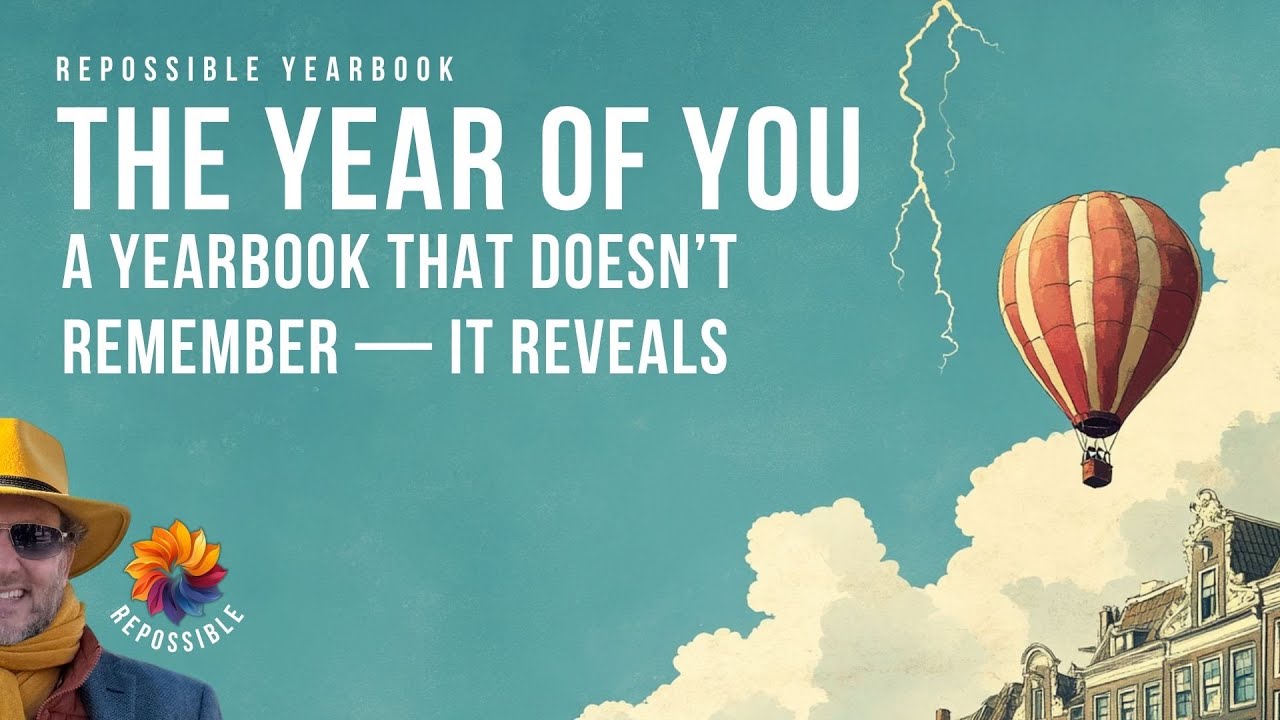
Welcome to a transformative journey led by Bradley Charbonneau, founder of Repossible, as he guides you through the empowering process of how to create a personal yearbook. This isn’t just any yearbook; it’s a forward-looking, intimate guide to the year you’re about to live—a "Repossible Yearbook" designed to help you gain clarity, courage, and confidence in your personal growth.
Bradley shares a detailed, real-time walkthrough of creating a yearbook for his character, Fearful Fiona, illustrating every step from ideation to publication. Whether you’re familiar with the concept or new to it, this article will equip you with practical insights and inspiration to craft your own personal yearbook and set intentional goals for the coming year.
Table of Contents
- 🌟 Understanding the One Word Project
- 🦹♀️ Meet the Villains: Identifying What Holds You Back
- 📚 Building Fearful Fiona’s Yearbook: A Step-by-Step Guide 📝
- 🧰 Using AI and Software Tools to Streamline Creation 🤖
- 📖 Publishing Your Yearbook: From Ebook to Hardcover 📦
- ✨ The Power of Writing Your Own Yearbook
- ❓ Frequently Asked Questions (FAQ)
🌟 Understanding the One Word Project
The One Word Project centers around choosing a single, powerful word to guide your year. Bradley explains how this concept evolved from juggling many ideas into focusing on one mantra that shapes your mindset and actions for the year ahead.
For 2025, Bradley’s own guiding word is “mathematician”—a blend of precision and magic that reflects his aspirations. The idea is simple but profound: pick one word that embodies what you want to become or achieve, and build your yearbook around it.
Each yearbook is a compact book focused on that word, designed to help you stay on track and motivated. The project isn’t about grand leaps but steady progress, patience, and perseverance. Bradley emphasizes the importance of small, achievable goals, like running a kilometer rather than a marathon or losing ten kilos over ten months instead of ten days.
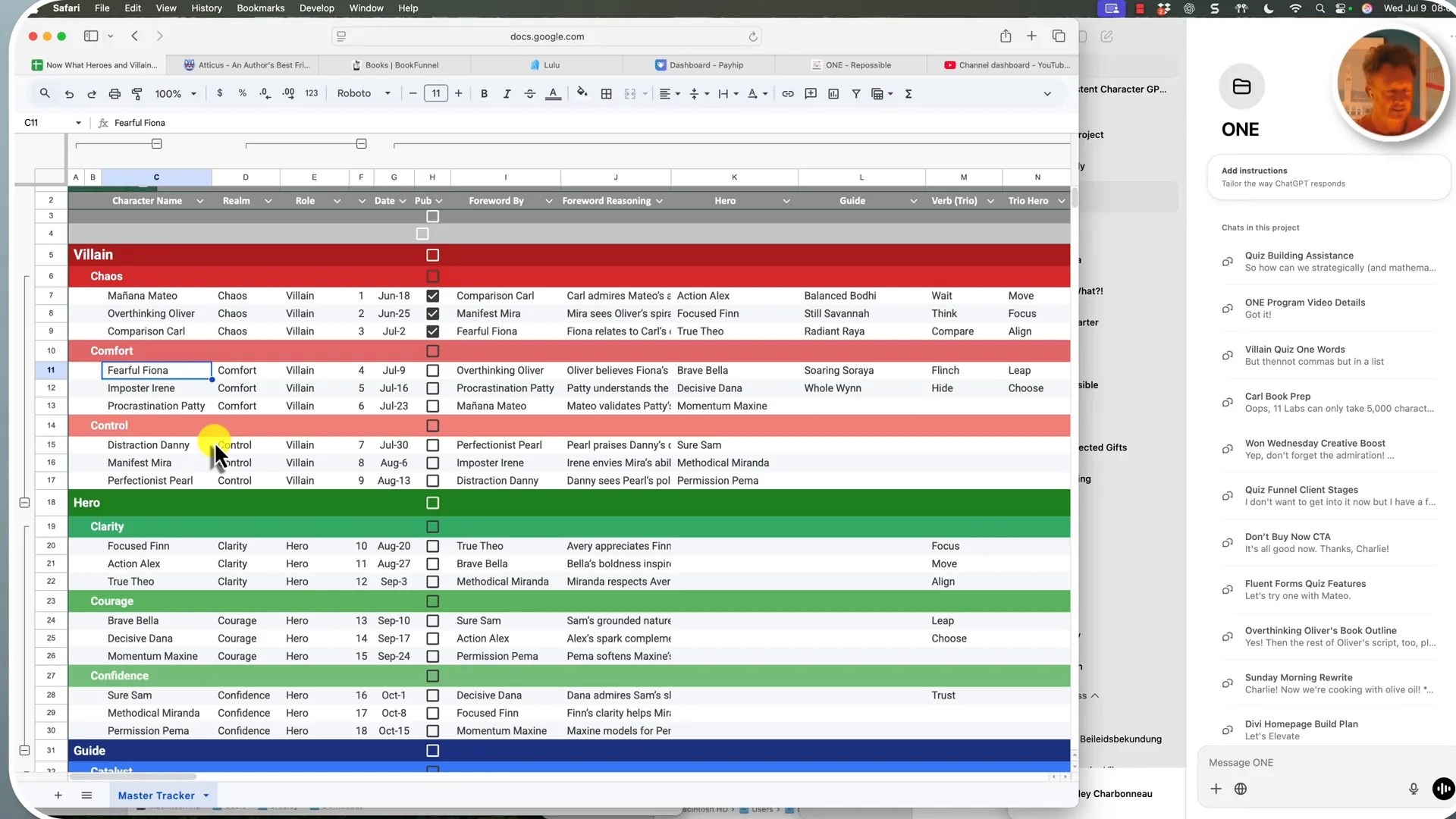
🦹♀️ Meet the Villains: Identifying What Holds You Back
Bradley introduces the concept of “villains” — psychological barriers or internal voices that hold you back. These include characters like Manana Mateo, who procrastinates, Overthinking Oliver, who hesitates endlessly, and Comparison Carl, who constantly measures himself against others.
Each villain has a book title that reflects their mindset, such as Manana Mateo’s book titled Someday, symbolizing delayed action. Fearful Fiona’s book is titled Safe, highlighting her focus on security and avoidance of risk.
Understanding your main villain is crucial because it helps you recognize which fears or habits are limiting your growth. Bradley stresses that we all carry villain, hero, and guide qualities within us — the goal is awareness, not eradication.
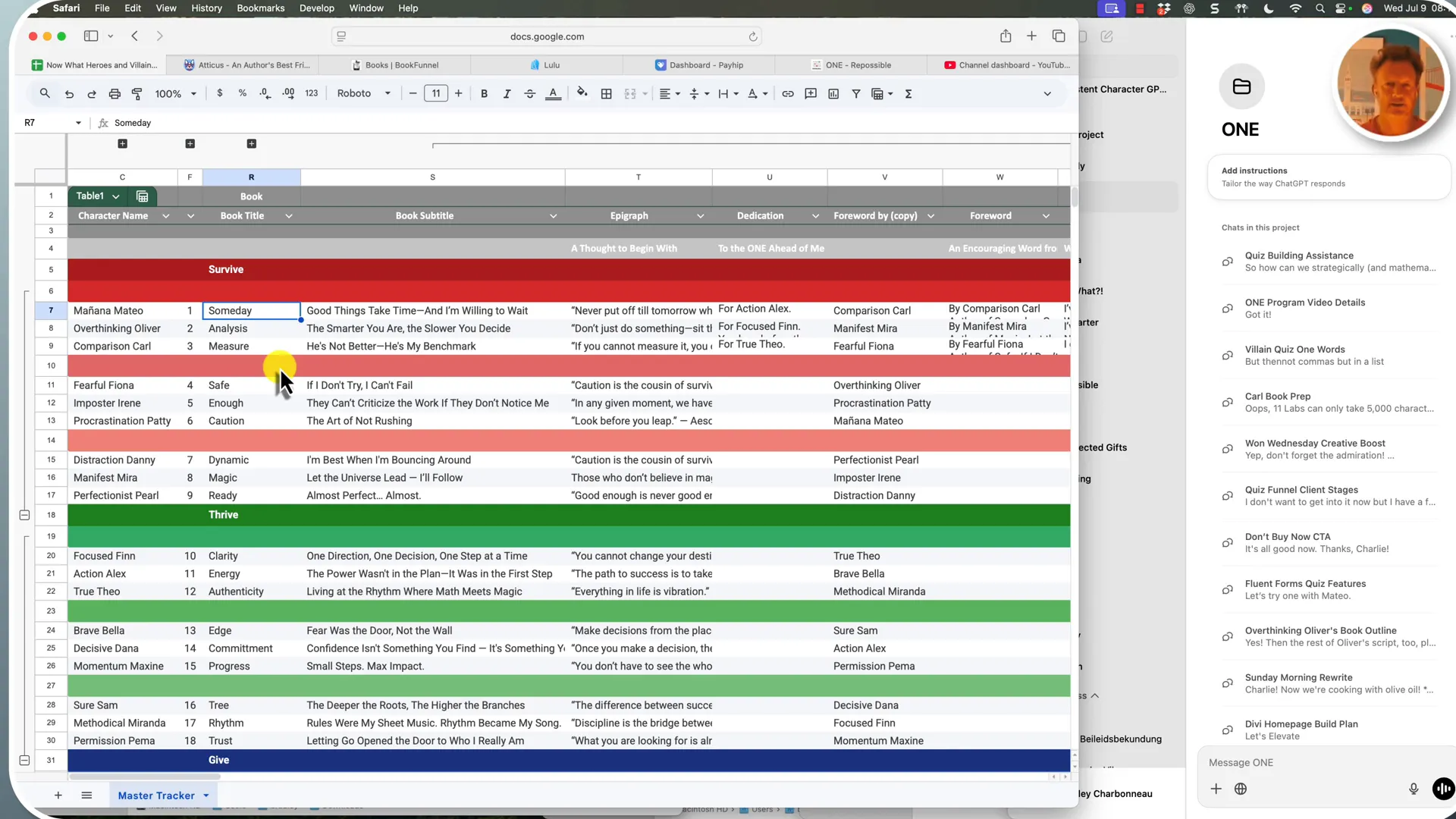
📚 Building Fearful Fiona’s Yearbook: A Step-by-Step Guide 📝
Bradley walks through the full creative process of putting together Fiona’s yearbook, showing how to organize content and generate each book element:
- Book Title: Keep it to one impactful word (e.g., Safe).
- Subtitle: A complementary phrase that reinforces the main word (e.g., “If I don’t try, I can’t fail”).
- Epigraph: An inspirational quote related to the theme (Bradley’s example: “Caution is the cousin of survival”).
- Dedication: A message dedicated to someone meaningful, often a hero or an admired person.
- Foreword: Written by a fellow “villain” who believes in the author, adding an authentic voice and perspective.
- Preface: Describes the present moment and sets the tone for the year ahead.
- Chapter One: The foundation of the book, centered on the one word and its significance.
- Epilogue: Written as if one year later, reflecting on achievements and growth, starting with the phrase “What a year!”
- Acknowledgments: Gratitude expressed to those who helped along the journey, imagined from the future.
- About the Author: A bio written from the future self’s perspective, highlighting progress and strengths.
- Also by the Author: Fun, creative book ideas related to the main theme to spark imagination.
- Book Description (Blurb): A sales pitch-style summary that captures the essence and appeal of the book.
Bradley emphasizes the importance of the epilogue, which is a powerful tool to visualize success by writing about the future as if it has already happened. He encourages adding vivid, extreme detail to make goals feel tangible and motivating.
🧰 Using AI and Software Tools to Streamline Creation 🤖
Bradley openly shares his use of AI, specifically a chatbot named Charlie Holiday, to help organize ideas, generate content like dedications and forewords, and speed up the book creation process. He advises caution with AI-generated content, reminding you that the book should be your own authentic voice.
For formatting and publishing, Bradley utilizes tools like Atticus and Reedsy, which are designed specifically for authors. These tools allow for easy layout, exporting ebooks (EPUB format), and print-ready PDFs. He explains the benefits of these programs over standard word processors, highlighting features like “what you see is what you get” and professional formatting.
To distribute ebooks, he uses BookFunnel, a platform that allows readers to access the book in their preferred format (Kindle, Apple Books, Kobo, browser, etc.). For printing physical copies, he recommends Lulu, a print-on-demand service that enables ordering hardcover or paperback copies without going through traditional publishing channels.
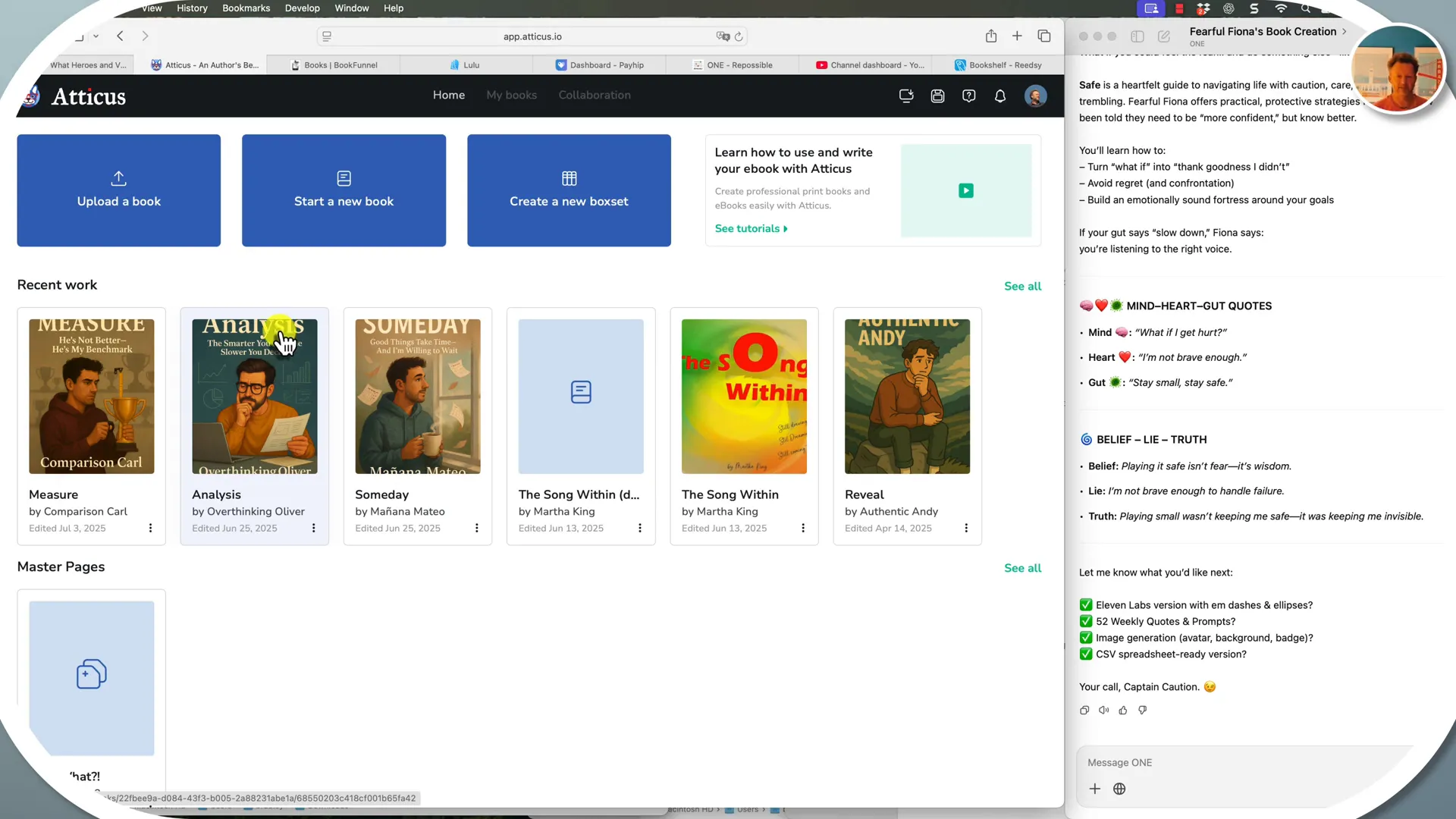
📖 Publishing Your Yearbook: From Ebook to Hardcover 📦
After completing the writing and formatting, Bradley walks through the publishing steps:
- Exporting the Ebook: Generate an EPUB file for digital readers.
- Uploading to BookFunnel: Create a delivery link for sharing your ebook easily.
- Exporting the Print PDF: Prepare a print-ready PDF file compatible with Lulu.
- Designing the Print Cover: Use Lulu’s cover design tool to create a professional-looking jacket, including spine text and back cover description.
- Ordering the Physical Book: Purchase hardcover or paperback copies for yourself or gifts.
Bradley advises adding filler pages (such as 52 weekly quotes) to increase page count so the book has a spine and looks polished. He also discusses print options, like cream paper and hardcover bindings, noting that hardcover is worth the extra cost for a special keepsake.
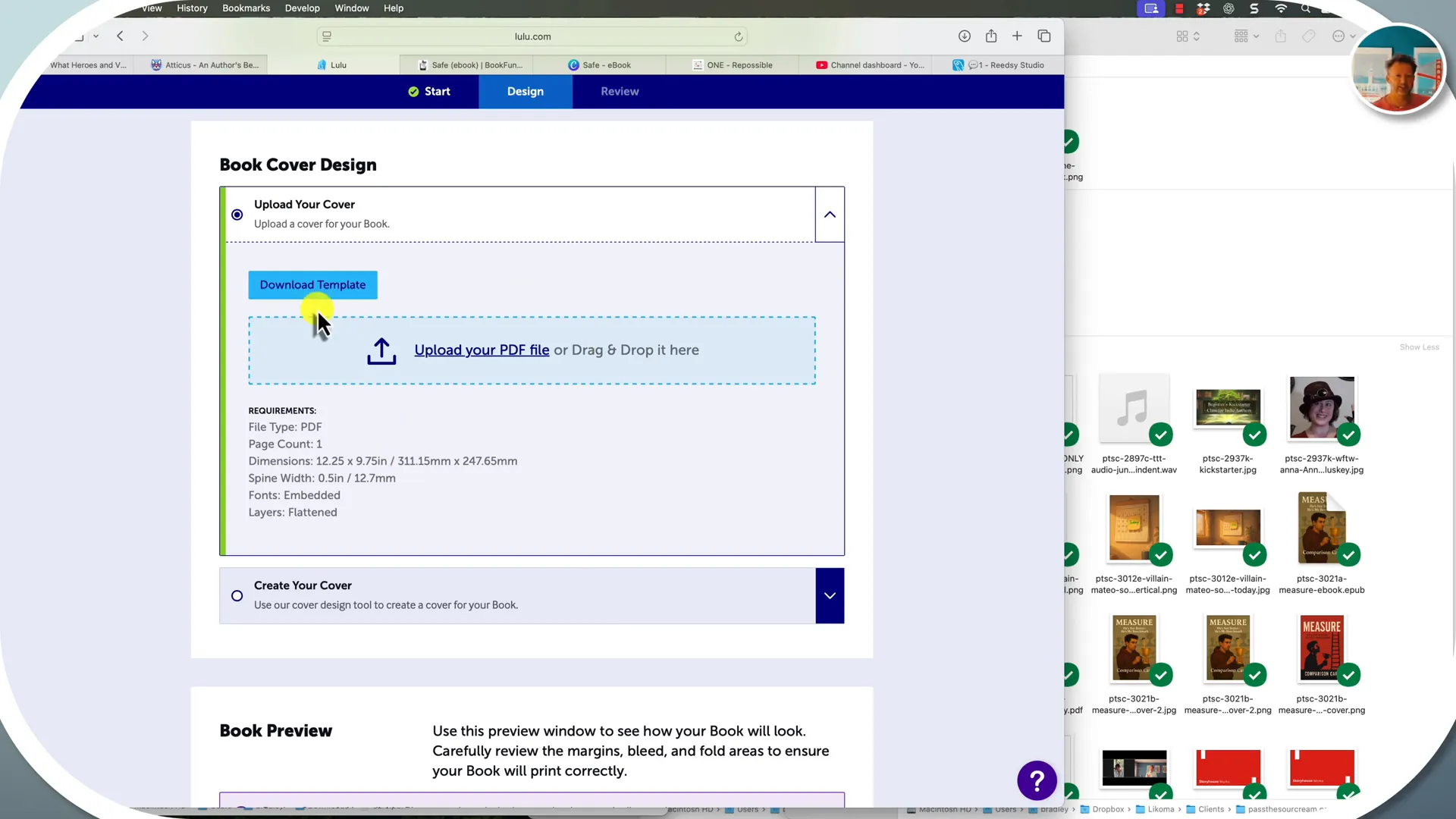
✨ The Power of Writing Your Own Yearbook
Bradley’s core message is that writing a personal yearbook is a transformative exercise. It moves you from being stuck in old patterns to intentionally authoring your future. It’s about clarity, courage, and confidence, and about becoming the person you want to be—one step at a time.
He encourages you to create your one word book every year, making this a yearly ritual to track growth and reset intentions. The process is accessible, supported by free or affordable tools, and designed to make writing and publishing your personal yearbook achievable.
Ultimately, your book becomes your map, your mantra, and your motivation. It’s your story, your future, and your roadmap to a more repossible year.
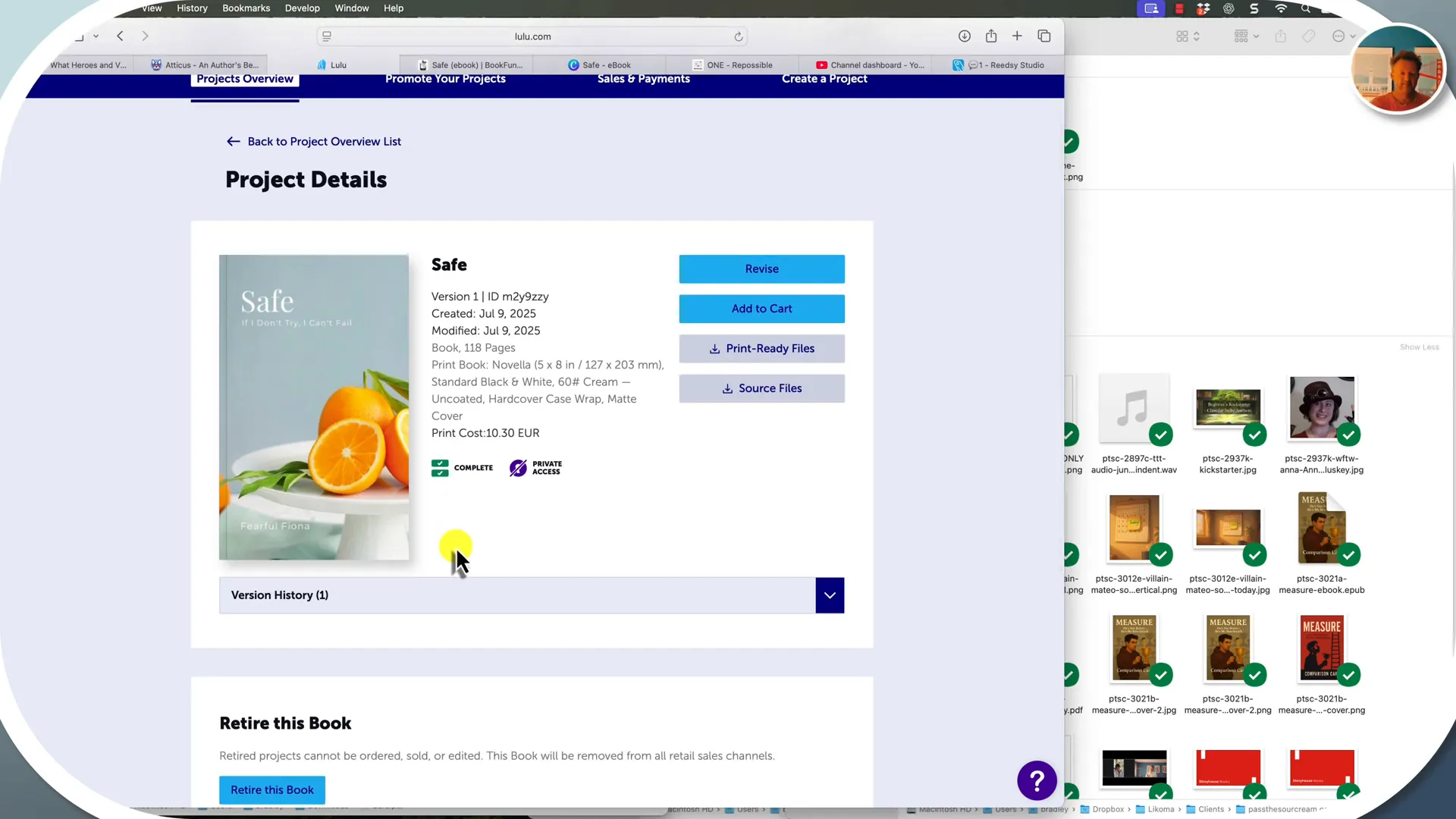
❓ Frequently Asked Questions (FAQ)
What is the One Word Project?
It’s a personal development approach focused on selecting one word to guide your year’s mindset and actions. Your yearbook is built around this word as a mantra for growth.
Who are the “villains” and why write books for them?
Villains represent internal obstacles like fear, procrastination, or comparison that hold you back. Writing their books helps you recognize and understand these parts of yourself so you can manage them better.
Do I need special software to create my yearbook?
No, but tools like Atticus or Reedsy make formatting and publishing easier. You can also use free software with some extra effort. The key is to focus on writing and then use tools that fit your needs.
Can AI write my yearbook for me?
AI can assist with organizing ideas and drafting content, but your voice and authenticity are crucial. Use AI as a helper, not a replacement.
How long does it take to create a personal yearbook?
Bradley’s example took a few hours, but with preparation and focus, it can be done over a weekend. The goal is to keep it manageable and meaningful.
Can I publish my yearbook publicly?
Yes, you can share it digitally or print copies for yourself and others. The process Bradley describes supports both private and public sharing.
What if I don’t know my one word yet?
Bradley offers guidance to help you discover your word. It’s a personal reflection process, and sometimes the word reveals itself as you explore your goals and values.
Ready to take control of your year and create your own personal yearbook? Start small, pick your one word, and watch how this simple ritual can unlock a powerful transformation.